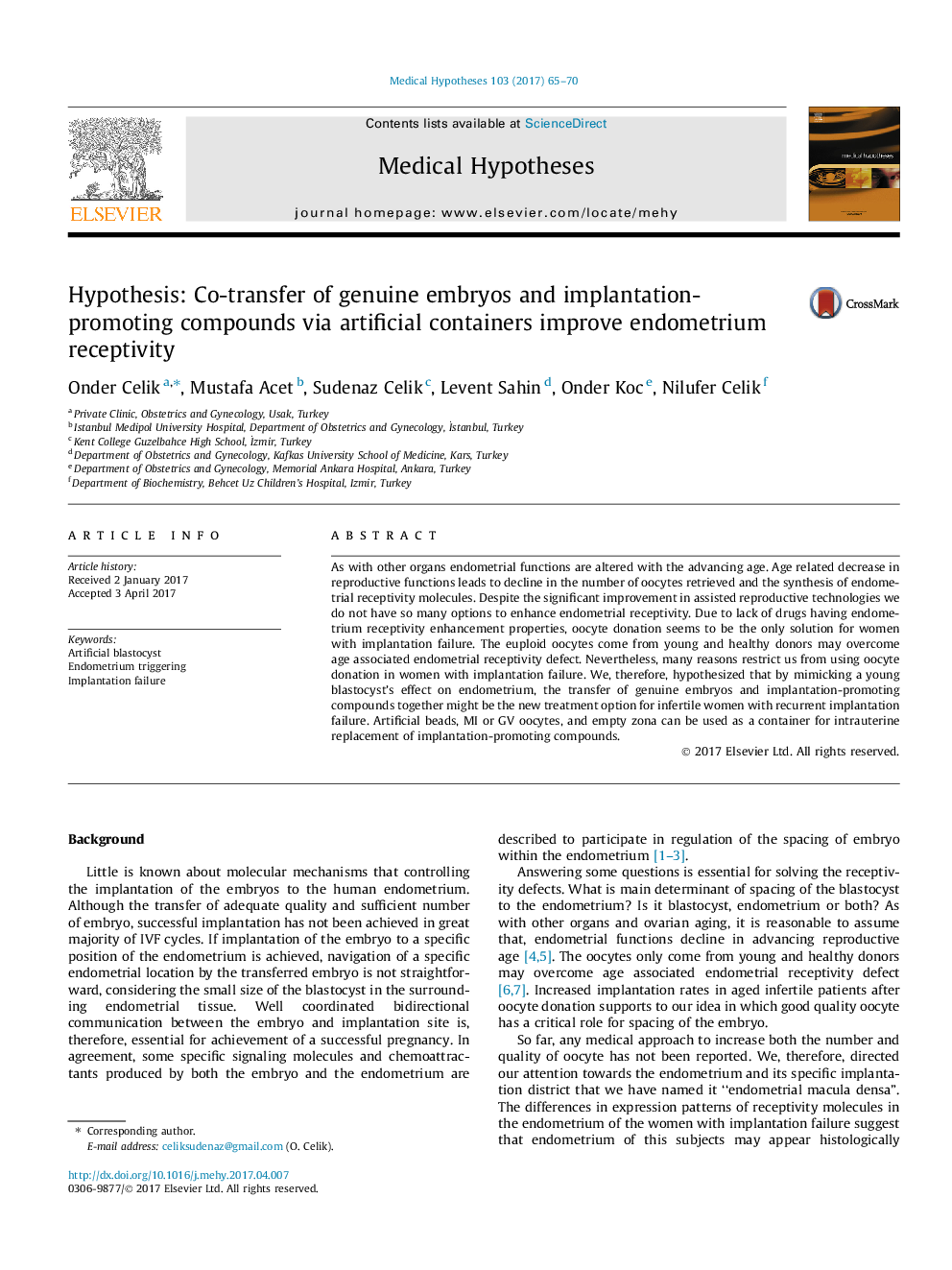| Article ID | Journal | Published Year | Pages | File Type |
|---|---|---|---|---|
| 5548445 | Medical Hypotheses | 2017 | 6 Pages |
As with other organs endometrial functions are altered with the advancing age. Age related decrease in reproductive functions leads to decline in the number of oocytes retrieved and the synthesis of endometrial receptivity molecules. Despite the significant improvement in assisted reproductive technologies we do not have so many options to enhance endometrial receptivity. Due to lack of drugs having endometrium receptivity enhancement properties, oocyte donation seems to be the only solution for women with implantation failure. The euploid oocytes come from young and healthy donors may overcome age associated endometrial receptivity defect. Nevertheless, many reasons restrict us from using oocyte donation in women with implantation failure. We, therefore, hypothesized that by mimicking a young blastocyst's effect on endometrium, the transfer of genuine embryos and implantation-promoting compounds together might be the new treatment option for infertile women with recurrent implantation failure. Artificial beads, MI or GV oocytes, and empty zona can be used as a container for intrauterine replacement of implantation-promoting compounds.
